Knitting is an art form where each stitch holds the promise of creating something beautiful and functional. Within this intricate craft, the abbreviation “KFB” carries a significant meaning.
KFB, short for “Knit Front and Back,” is a fundamental knitting technique with a world of creative potential.
It involves the simple act of knitting into both the front and back loops of a stitch, resulting in an increase in stitches.
Understanding KFB is essential for knitters of all levels, as it serves as a building block for shaping, texture, and decorative elements in various knitting projects.
In this comprehensive exploration, we will delve into the intricacies of KFB, its applications, variations, and tips for flawless execution.
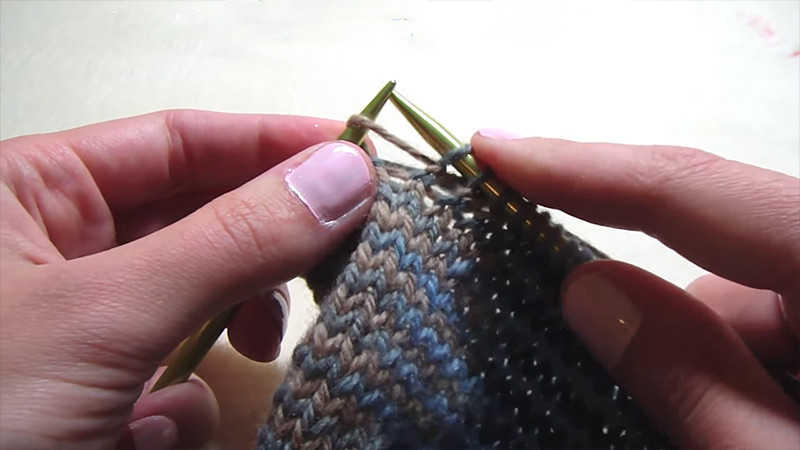
What Does KFB Mean?
KFB stands for “Knit Front and Back.” It is a knitting technique that involves making two stitches out of one by knitting into both the front and back loops of a single stitch.
This increase method is commonly used to create new stitches in your knitting work, ultimately increasing the number of stitches on your needle.
When you KFB, you are essentially increasing the stitch count by one. This is particularly useful in various knitting projects, such as creating shaping, increasing the size of a piece, or adding decorative elements.
It’s a straightforward technique that can be learned and executed by knitters of all skill levels.
How to KFB in Knitting
Now that we know what KFB means, let’s dive into the step-by-step process of how to perform it. You’ll find that it’s relatively easy and can be incorporated into your knitting repertoire in no time.
Step 1: Begin with a Regular Knit Stitch
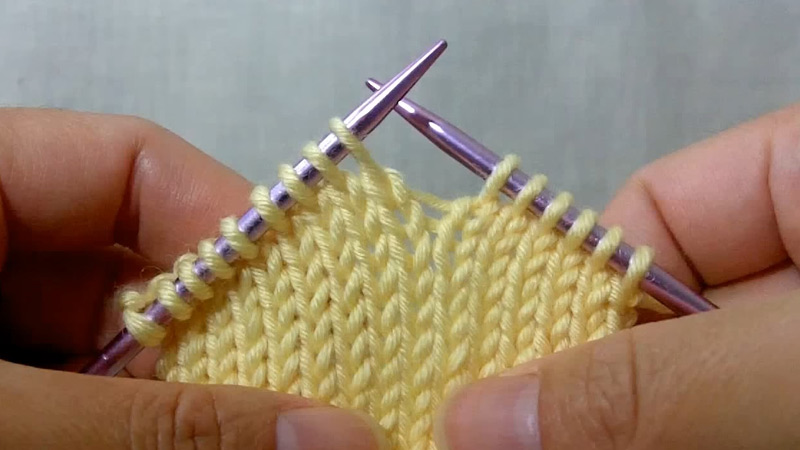
Start by knitting the first stitch on your left-hand needle as you normally would. If you are not familiar with basic knitting stitches, it’s essential to learn them before attempting KFB.
Step 2: Do Not Slip the Stitch Off the Left-Hand Needle
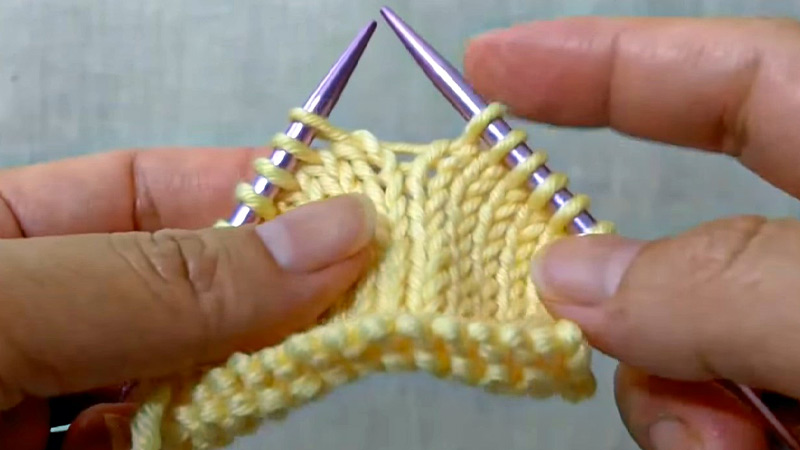
After knitting into the front of the stitch, do not slide it off your left-hand needle. Keep the original stitch on the needle.
Step 3: Knit into the Back Loop
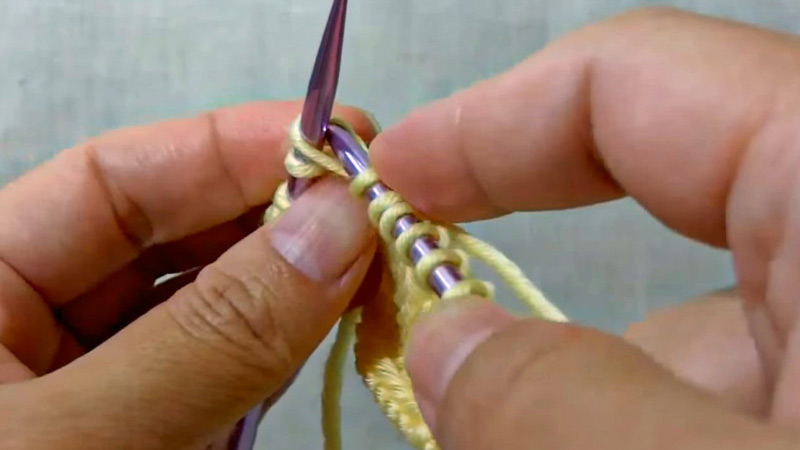
Now, insert the right-hand needle into the back loop of the same stitch you just knitted into the front. You will be essentially knitting into the same stitch a second time.
Step 4: Complete the KFB
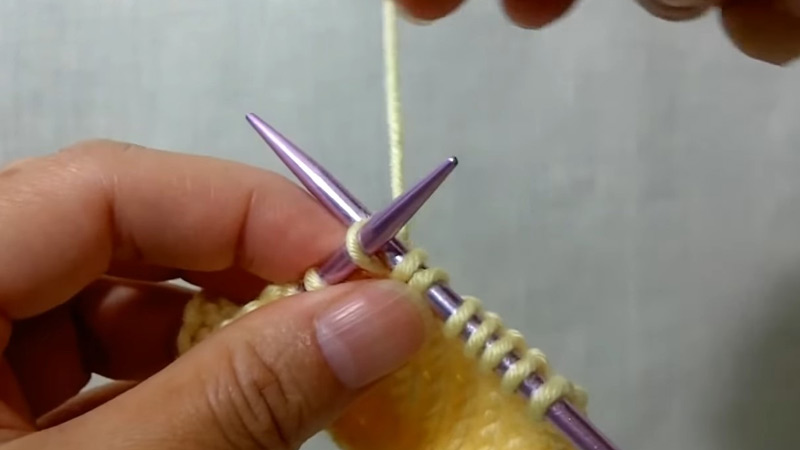
Once you have successfully inserted the needle into the back loop, proceed to knit it, just like you did for the front loop. This action creates a new stitch.
Step 5: Slip the Original Stitch Off
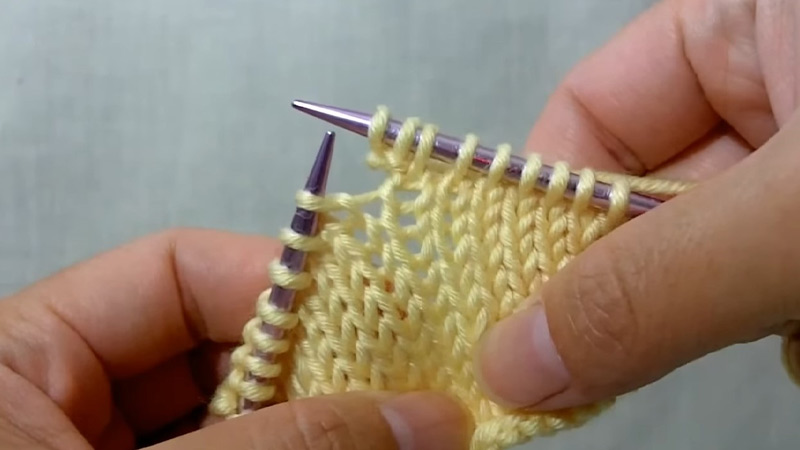
After you’ve knitted into both the front and back loops of the stitch, slip the original stitch off the left-hand needle. You now have two stitches where there was previously one.
Congratulations, you’ve successfully performed a KFB increase in knitting! Repeat these steps as many times as necessary to achieve your desired stitch count increase.
It’s a versatile technique that can be used in a variety of knitting projects, and once you get the hang of it, it becomes quite intuitive.
When to Use KFB in Your Knitting Projects
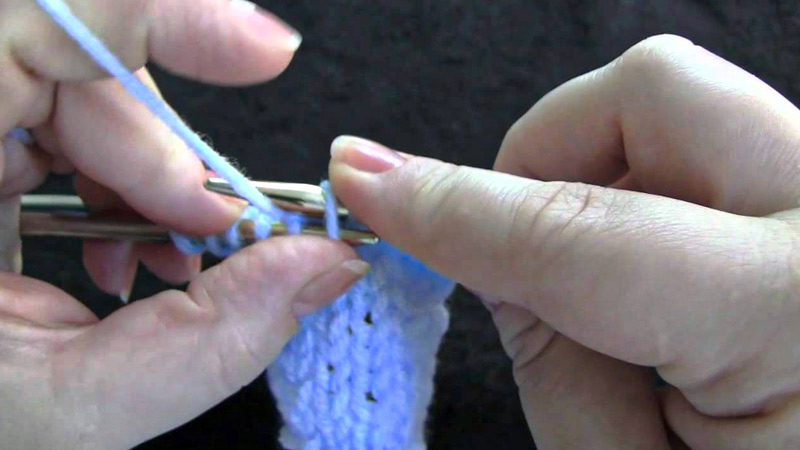
Understanding when and where to use KFB increases in your knitting projects is crucial to achieving the desired results.
Here are some common scenarios where KFB is employed:
Shaping
KFB is often used to shape various parts of a knitting project, such as sleeves, yokes, and raglan increases in sweaters.
By strategically placing KFB increases, you can create curves and contours in your knitting work. For example, when knitting a sweater, you may use KFB increases on either side of the center stitch to shape the raglan sleeves.
Decorative Elements
KFB can add decorative elements to your knitting. It creates a subtle, raised stitch that can be used for texture or patterning. For instance, in lace knitting, KFB increases can be used to create eyelets or decorative motifs.
Expanding the Size
If you need to expand the size of a knitted piece, such as the body of a cardigan or the width of a scarf, KFB increases can help you achieve the desired dimensions. Simply work KFB increases evenly across a row to gradually increase the stitch count.
Buttonholes
KFB increases can also be employed to create buttonholes in your knitting projects. By using KFB to increase the stitch count by a specific number, you can create an opening that allows you to insert buttons for closures.
Socks and Mittens
KFB increases are commonly used in sock and mitten patterns to shape the gusset and thumb gusset, respectively. They create a gradual expansion that fits the shape of the foot or hand comfortably.
Toys and Amigurumi
KFB increases are essential in the world of toy knitting and amigurumi. They help create the rounded shapes required for stuffed animals and other three-dimensional objects.
In summary, KFB increases are incredibly versatile and can be used in various knitting projects to achieve specific outcomes. By mastering this technique, you’ll have a valuable tool in your knitting toolkit to bring your creative ideas to life.
Common Variations of KFB
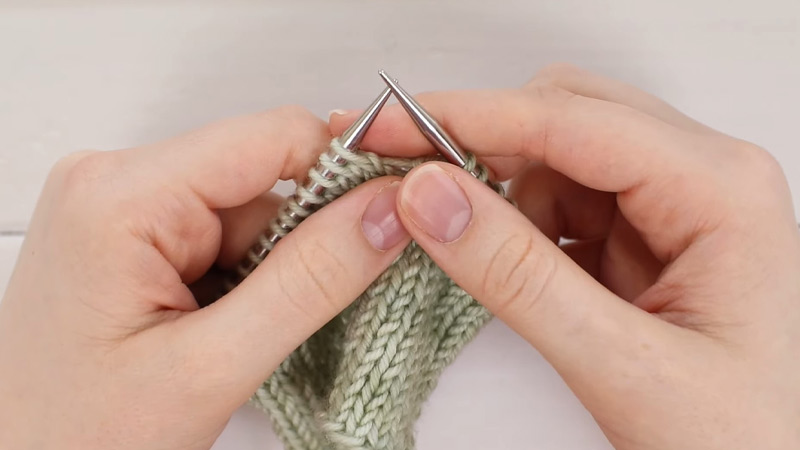
While the basic KFB increase involves knitting into the front and back of a stitch, there are a few variations and modifications that you may encounter in knitting patterns.
Let’s explore some of these variations:
KFB vs. KFBF
KFBF stands for “Knit Front, Back, and Front.” In this variation, you knit into the front, back, and then the front of the same stitch in a single motion. This results in an increase of two stitches instead of one.
KFBF is often used when a more pronounced increase is needed, or when a decorative element with more volume is desired.
Slip KFB (SKFB)
In the slip KFB variation, you begin by slipping the first stitch as if to knit, then proceed to perform the KFB increase in the next stitch.
This creates a neat edge with a slightly different look than a standard KFB increase. Slip KFB is often used in the creation of selvedge or edge stitches in knitting.
Knit, Purl, KFB (KPKFB)
In some patterns, you may encounter variations that combine KFB increases with other stitches.
For example, KPKFB involves knitting one stitch, purling the next stitch, and then performing a KFB increase. This combination can create interesting textures and patterns in your knitting work.
Double KFB
Double KFB is a more substantial increase that involves knitting into the front, back, and front loops of the same stitch twice.
This results in an increase of three stitches instead of one. Double KFB is typically used when a more significant expansion is needed in a particular area of your knitting.
These variations demonstrate the adaptability of the KFB technique, allowing knitters to achieve various effects and tailor their work to their specific design goals.
When following a knitting pattern, always check the instructions provided to determine which type of KFB increase is required for your project.
Tips for Working with KFB Increases
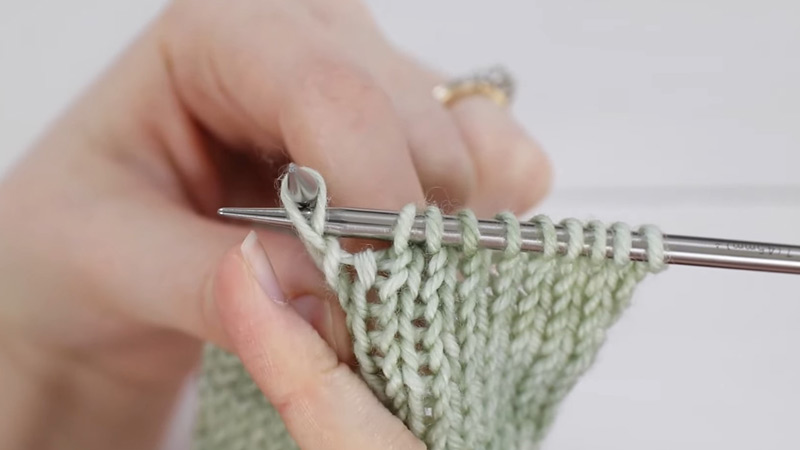
As with any knitting technique, there are some tips and best practices that can help you work with KFB increases more effectively and produce polished results:
Maintain Consistency
Consistency in your tension and technique is essential when working with KFB increases. Try to knit into the front and back loops of the stitch in the same manner for each increase to ensure uniformity in your work.
Count Your Stitches
Keep track of your stitch count, especially if you are using KFB increases for shaping purposes. Use stitch markers or write down your stitch count at various points in your project to avoid mistakes and ensure symmetry.
Practice on Scrap Yarn
If you’re new to KFB increases or any knitting technique, it’s a good idea to practice on scrap yarn before incorporating it into your main project. This will help you get comfortable with the motion and tension required.
Check Pattern Instructions
Always read and follow the pattern instructions carefully. Different patterns may use KFB increases in unique ways, so it’s crucial to understand how they are incorporated into your specific project.
Use a Removable Stitch Marker
When working on a project that requires a large number of KFB increases, consider using a removable stitch marker to mark the increase point.
This can be especially helpful in lace knitting or when you need to maintain specific stitch counts.
Keep Tension Even
Maintaining even tension when knitting into the front and back of a stitch is important for the overall appearance of your work. Be mindful of your yarn tension as you work the increases.
Experiment with Different Needle Sizes
Depending on your project and the desired effect, you may want to experiment with different needle sizes when working KFB increases.
Using a larger needle can create a more pronounced increase, while a smaller needle can result in a subtler effect.
Troubleshooting Common KFB Issues
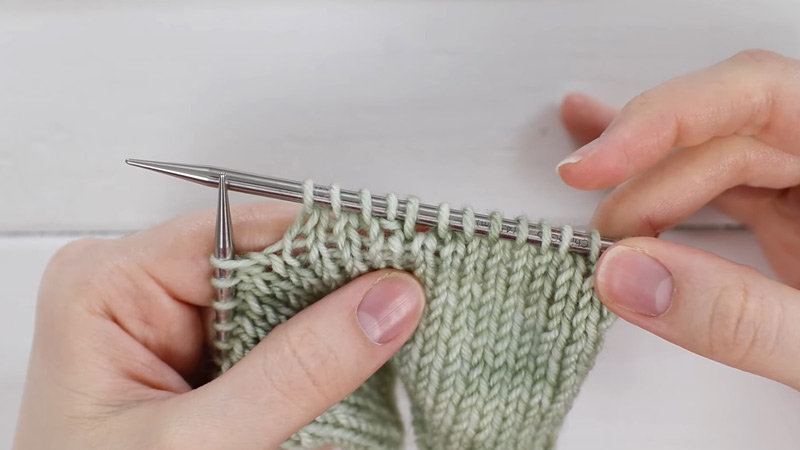
Like any knitting technique, KFB increases can occasionally present challenges or issues.
Here are some common problems you might encounter when working with KFB and how to address them:
Uneven Tension
Uneven tension can lead to visible gaps or inconsistencies in your KFB increases. To address this issue, pay close attention to your yarn tension and try to maintain a consistent pull as you work the increases. Practice can help improve your tension control.
Twisted Stitches
It’s essential to knit into the front and back loops of the stitch correctly to avoid twisting the stitches.
Twisted stitches can alter the appearance of your work and affect its drape. Make sure your needle enters the front and back loops cleanly without twisting the stitch.
Forgetting to Slip the Original Stitch
Occasionally, knitters may forget to slip the original stitch off the left-hand needle after completing the KFB increase.
This oversight can result in an extra stitch on the needle. If you realize this has happened, simply slip the extra stitch off the needle to correct the count.
Miscounting Increases
If you are using KFB increases for shaping purposes, it’s crucial to keep an accurate count of your increases.
Miscounting can lead to an asymmetrical or misshapen piece. Use stitch markers and regularly check your stitch count to prevent errors.
Difficulty Identifying the Front and Back Loops
In some cases, especially with dark or fuzzy yarns, it can be challenging to identify the front and back loops of a stitch. Taking your time and using good lighting can help you clearly see where to insert your needle.
Inconsistent Increases
To ensure that your increases are evenly spaced, you may need to do a bit of math. Calculate the number of stitches you need to increase over a certain length, and then distribute the KFB increases evenly across that section.
Experiment with Yarn and Needle Combinations
If you find that your KFB increases are too tight or too loose, consider experimenting with different yarn and needle combinations.
A yarn with more or less elasticity, coupled with appropriately sized needles, can help you achieve the desired results.
Stitches Falling Off the Needle
Occasionally, while working a KFB increase, a stitch may accidentally slip off the left-hand needle. To prevent this, make sure you are not using needles that are too slippery and that you maintain a firm grip on your work.
Addressing these common issues and practicing KFB increases regularly will help you become more confident and proficient in this knitting technique. Remember that, like any skill, mastering KFB takes time and patience.
KFB in Combination with Other Knitting Techniques
KFB increases can be used in combination with other knitting techniques to create intricate patterns and textures.
Here are a few examples of how KFB can be paired with other stitches:
KFB and Yarn Overs
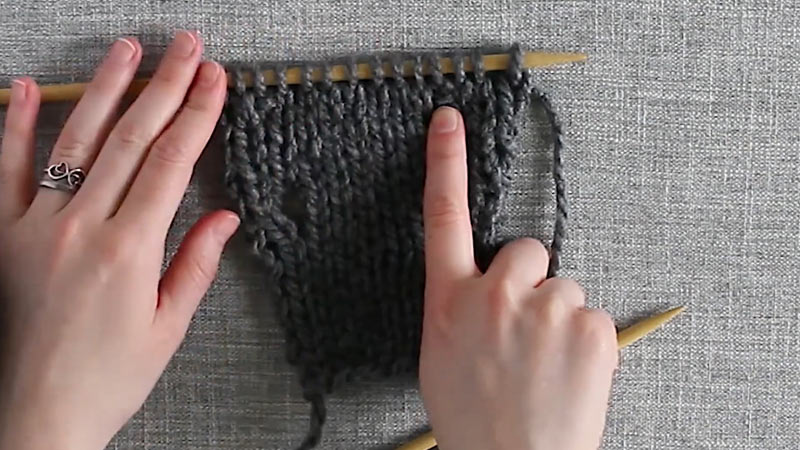
Combining KFB increases with yarn overs (YO) can create beautiful lace patterns. For instance, you can work a KFB increase on one row and follow it with a yarn over on the next row to create eyelets in your knitting. This combination is commonly used in lace shawls and scarves.
KFB and Decreases
To create balanced shaping in your knitting, you can pair KFB increases with corresponding decreases like knit two together (K2tog) or slip, slip, knit (SSK).
For example, you might KFB on one side of your work and then use SSK decreases on the other side to maintain stitch count while shaping a sleeve.
Garter Stitch and KFB
KFB increases can be used to create textured patterns when combined with garter stitch. By alternating rows of KFB with rows of plain knitting, you can achieve a raised, textured fabric that adds depth and interest to your project.
KFB and Purl Stitches
In patterns that include both knit and purl stitches, you can use KFB increases alongside purl stitches to create ribbing or other textured effects. This combination can be particularly useful when working on cuffs, collars, or borders.
KFB and Slip Stitches
Slip stitches can add an element of colorwork or texture to your knitting. When combined with KFB increases, they can create intriguing patterns and designs.
Experiment with different color combinations and stitch combinations to achieve unique results.
By exploring these combinations, you can take your knitting to the next level and create projects with intricate textures, patterns, and shaping.
FAQS
Is KFB the same as M1 in knitting?
No, KFB (Knit Front and Back) is different from M1 (Make One).
Can I use KFB in lace knitting patterns?
Yes, you can use KFB in lace knitting to create decorative elements and increases.
How do I prevent gaps when using KFB increases?
To avoid gaps between your KFB increases and neighboring stitches, ensure that you knit into both the front and back loops of the stitch firmly and consistently.
Can I use KFB for decreasing in knitting?
KFB is primarily used for increasing stitch count. To decrease stitches, you would use different techniques, such as knit two together (K2tog) or slip, slip, knit (SSK).
What are some alternatives to KFB increases?
Alternatives to KFB include M1 increases, yarn overs (YO), and various other increase methods.
Wrap Up
KFB in knitting, which stands for “Knit Front and Back,” is a versatile and essential technique.
It involves knitting into both the front and back loops of a stitch, effectively increasing the stitch count by one.
Whether you’re shaping garments, adding decorative elements, or creating textured patterns, KFB opens up a world of creative possibilities.
By mastering this technique and its variations, you can elevate your knitting skills and bring unique depth and dimension to your projects.
So, the next time you encounter KFB in a knitting pattern, embrace it as a tool to enhance your craft and explore the endless design opportunities it offers.
Leave a Reply